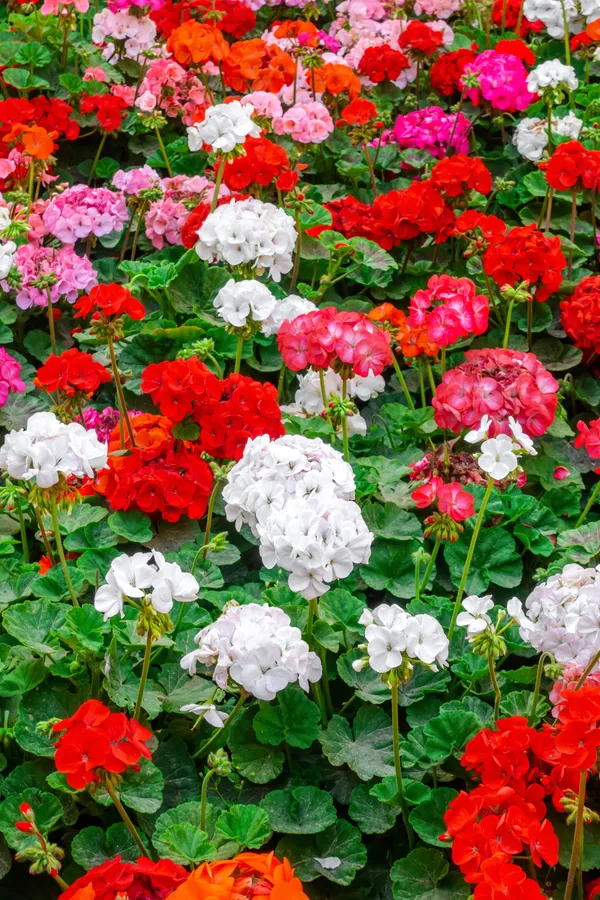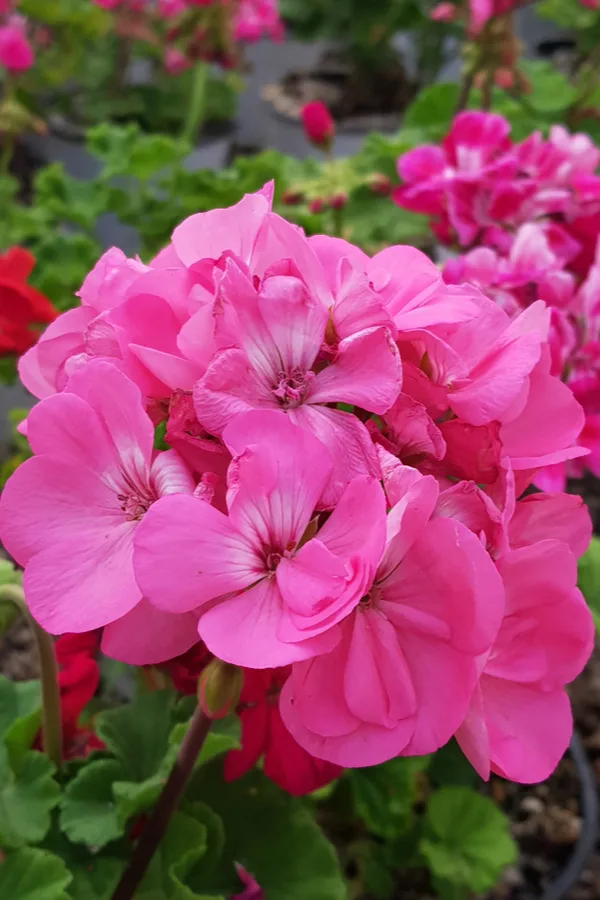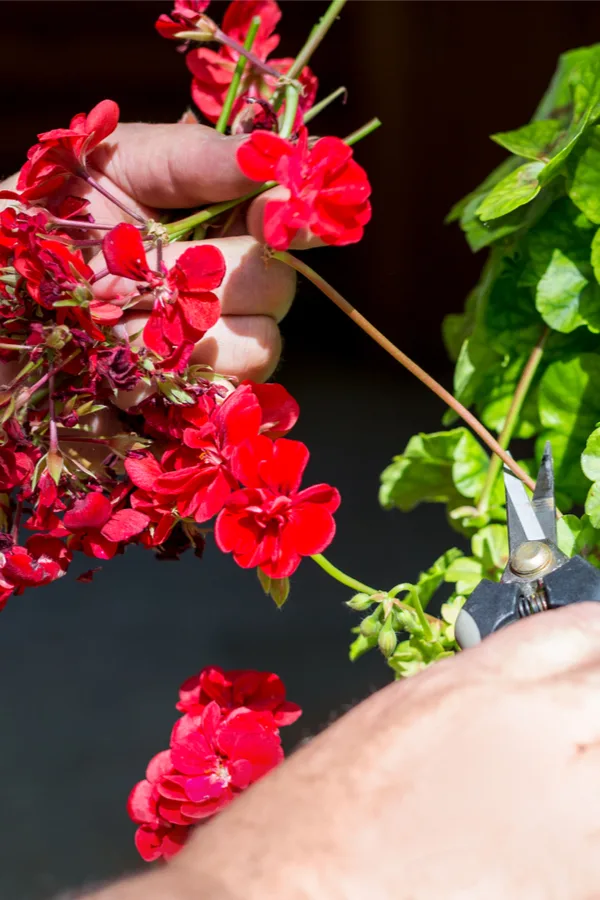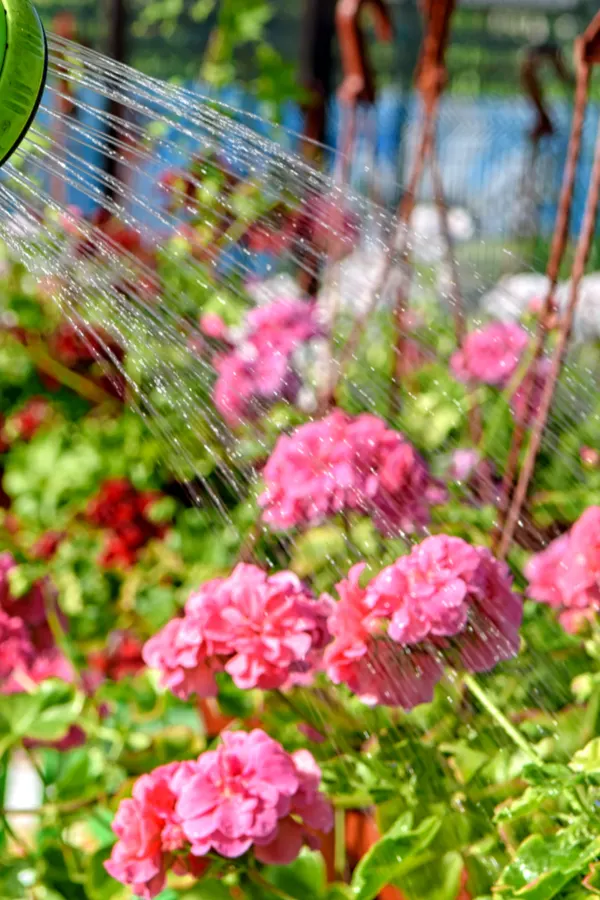Keeping your geraniums healthy, strong and blooming all summer long doesn’t have to be difficult. In fact, with just a few simple care and maintenance tips, you can have gorgeous blooms from late spring right up until the first frost!
Geraniums have always been a favorite of gardeners looking for bright, long-lasting summertime blooms. With their long, extended stems of showy flowers, they are perfect when planted directly in flowerbeds, or for filling pots, containers and hanging baskets with big color.
Even better, geraniums are rarely attacked by insects or pests. In fact, they are even grown in many vegetable gardens near cabbage and cauliflower plants because they are thought to actually repel cabbage worms.

Depending on the variety chosen, geraniums can range from just a few inches high, all the way up to a few feet or more. And can they ever be colorful! Geranium varieties can be found in white, red, pink, purple, salmon and even orange.
Unfortunately, many gardeners struggle with geraniums by mid-summer. Without proper care, plants can become leggy, and the blooms sparse and underwhelming. But luckily it doesn’t take much to get them to spring back to life.
In fact, with just a few simple tips, you can have your geraniums blooming and booming strong in a flash – and staying that way into late fall!
How To Keep Geraniums Blooming – 3 Simple Tips To Success
Although most gardeners think of geraniums as an annual, they are actually a perennial plant. That is, if you live in the warmer, tropical climates of zones 10 and 11, where winters never see a hard frost or freeze.
But because they have their roots as a perennial, there are a few key aspects to getting them to bloom more profusely when growing as an annual. And that all begins with pinching these fast growing plants back to create a more compact, robust growth pattern.

One that not only creates a thicker, more dense set of blooms, but a plant that can produce a higher number of additional blooms throughout the growing season.
#1 – Pinching Back Geraniums, How To Keep Geraniums Blooming
Geraniums tend to become quite leggy and sparse if left to grow on their own accord. Especially when they are growing in pots, containers or hanging baskets.
With limited soil space, the plants tend to grow outward as fast as they can. For this reason, it is important to pinch back stem growth to force growth that is more dense and thick.

It is best to start early in the season by pinching back all of the growth on stems back 1/2 to 3/4 of a inch. This can be done easily with a pair of scissors, garden pruners, or even with sharp fingernails.
Pinching back encourages the plant to grow multiple shoots from the pruned stems. Even more mature plants in mid-summer can benefit from a bit of pinching back. It results in a much bushier and healthier plant. And, a plant that can produce many more blooms and flowers.
#2 – Deadheading Spent Blooms, How To Keep Geraniums Blooming!
Once geranium blooms start to appear and flower, it is time to spring into action with deadheading. Regular deadheading (taking off spent blooms), is critical to creating continual blooms for many annuals and perennials. (See : How To Deadhead Flowers)
In fact, when it comes to geraniums, it the usually the single biggest factor in keeping plants from blooming strong all season. Without removing the old blooms and stems, the plant continues to burn valuable resources and energy on the failing flowers.

Energy that is needs to be available to produce new blooms shoots and flowers. As soon as a bloom stem begin to fade and die off, it’s time to cut the bloom and stem off. Be careful not only cut the flower head, but the entire bloom stem back to the base of the plant.
This stops the plant from using any energy on the old bloom and stem, and re-directs resources to growing new blooms.
In addition to deadheading, always cut away any fading or damaged foliage from the plant as well. Just like with old blooms, plants use a tremendous amount of energy trying to heal damaged foliage.
#3 – Fertilizing & Watering – How To Keep Geraniums Blooming
Although they are not tremendous feeders from the soil, geraniums can benefit greatly from a regular dose of all-purpose fertilizer. Especially for those growing in containers and baskets where there is a limit to soil space and nutrient availability.
Slow and steady fertilizing is better than large single doses of nutrients. It keeps growth on an even pace, and allows the plant to use the extra bit of energy for blooms and not large foliage growth.

For best results, use a light dose of an all-purpose liquid fertilizer every 21 to 28 days. Liquid fertilizers work fast to supply nutrients – by absorbing both through the roots and leaves of the plant. To keep the dose on the light side, mix at about half of the normal recommended rate.
Water Smart – How To Keep Geraniums Blooming Strong
Finally, watering plays a key role in to both bloom formation and continuity. A plant stressing from too little or too much water will slow or even stop production of new blooms. (See : The 4 Simple Secrets To Watering Annuals)
You will need to water baskets and containers more frequently than geraniums growing in flowerbeds. This is due simply to the fact they tend to dry out at a faster rate. But it’s important to not allow the roots of geraniums to sit for long periods in water in either setting.

In fact, it is better to water geraniums less-frequently but with more water, than constant small doses. This forces roots deeper and develops a stronger plant.
Check the soil prior to watering using the tip of your index finger. Place your fingertip down a few inches into the soil, if you feel moisture, allow the soil to dry out before watering.
There you have it, 3 simply keys to keep your geraniums blooming like crazy this summer!
Follow Our Facebook Page For Great Gardening Tips And Advice! This Is My Garden Facebook Page
This Is My Garden is a garden website created by gardeners, for gardeners. Jim and Mary Competti have been writing gardening, DIY and recipe articles and books and speaking for over 15 years from their 46 acre Ohio farm. They publish three articles every week, 52 weeks a year. Sign up today to follow via email, or follow along!
